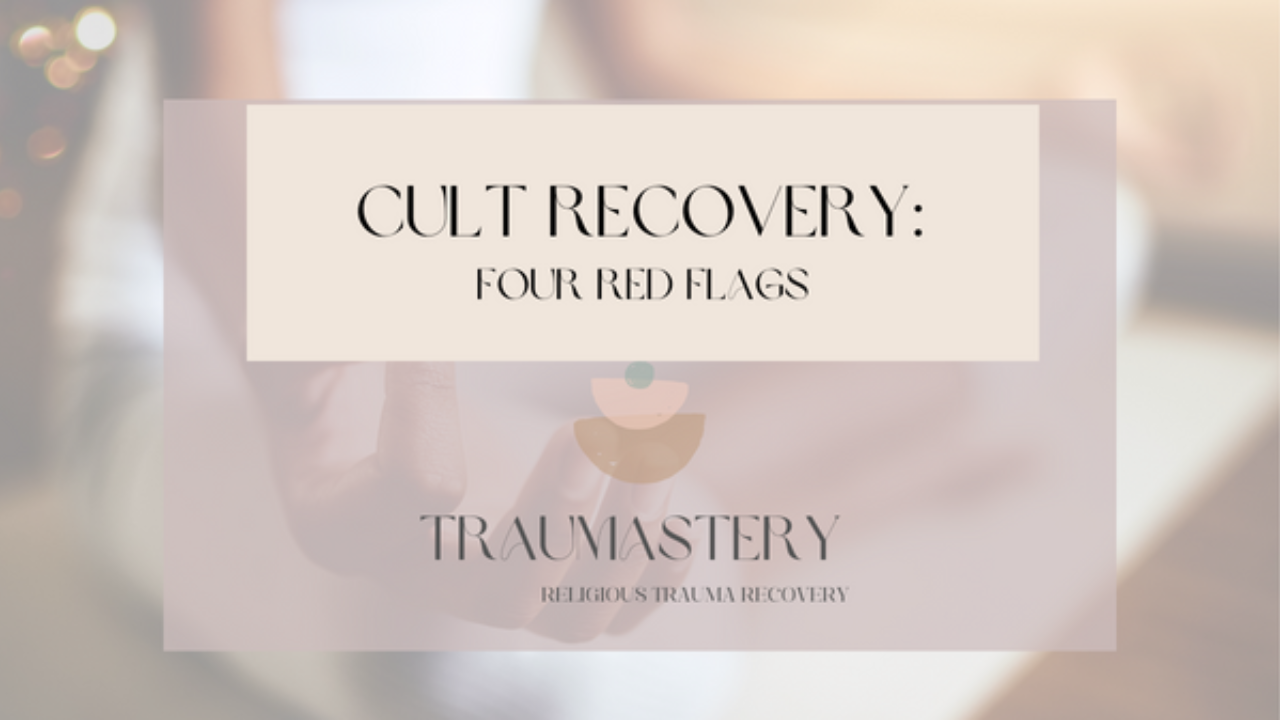Cult Recovery: 4 Common Red Flags

We have been talking a lot lately about rigid religions and cult recovery here at Traumastery. While cults can seem completely different in their beliefs, practices, and tactics, they will all have the same glaring red flags that, once you know what to look for, can make them much easier to spot.
So let’s dive in: What makes a group a cult?
Red Flag #1: High Control & Demand
In cult environments, a charismatic and authoritative leader will control the life decisions of followers. High control and demand can appear in a number of ways. This can mean:
-
Financial control - members are required to give most (if not all) of their money/income/assets to the group.
-
Resources - Members may be expected to work without compensation “for the good of the group”. Many cult members may have/still hold prominent positions outside of their cult environment. Every member is required to provide their resources to the cult.
-
Possessions - members must “give up all possessions” to the cult/cult leader.
-
For example: Members may be told by leadership that they will be “blessed by God” according to how many possessions they give up when they join.
-
-
Demanding attention - This is extremely dangerous because it isolates cult members from any other community they may have once had.
-
Example: Demanding that all time and attention is spent with group members, working without compensation, or recruiting new members.
-
Red Flag #2: Outsiders’ questions are met with hostility
Oftentimes, when cult members are questioned about their cult’s practices and environment, or, are told that they are in a cult by an outsider, members will dig in their heels and repeat “canned” information coming from that cult’s leadership.
Red Flag #3: Fear-Mongering
Fear-mongering is when a person in a leadership position intentionally tries to make others afraid of something. Ex: End of times or a doomsday mentality.
Red Flag #4: Isolation
If a leader requires explicit devotion and separation from loved ones, it’s a cult. The aim is for the cult’s leadership to be the only form of support for its members making it extremely difficult to leave. This is often seen as an all-or-nothing belief - you are in or you are out, and then you are completely cut off from the community if you disagree.
Cult members may also harbor an us-vs-them mentality where anyone outside of the cult or religious group are “lesser than” and not to be associated with, and are actively discriminated against. Racism, homophobia, misogyny have been reported from ex-members of cults.
We always offer several ways to get the support that you need.
Survivors: Did you read through this list of red flags and think "Uh oh" because your group might have been a little bit culty? We have a specialized education membership for survivors like you. We teach you about culty red flags, how to take care of your mental health in the aftermath of cult abuse, and how you can protect yourself from groups like this in the future. Join us for A Year of Non-Magical Thinking today.
Therapists: If you are currently helping clients through identifying the red flags of their culty group and need a little support and education along the way, then we have a curated religious trauma and cult recovery education program for you! Join us for A Year of Non-Magical Thinking for Therapists and learn how cult groups work, how to help your clients process their experiences, and get a little consultation for your cases along the way. Join us today.


